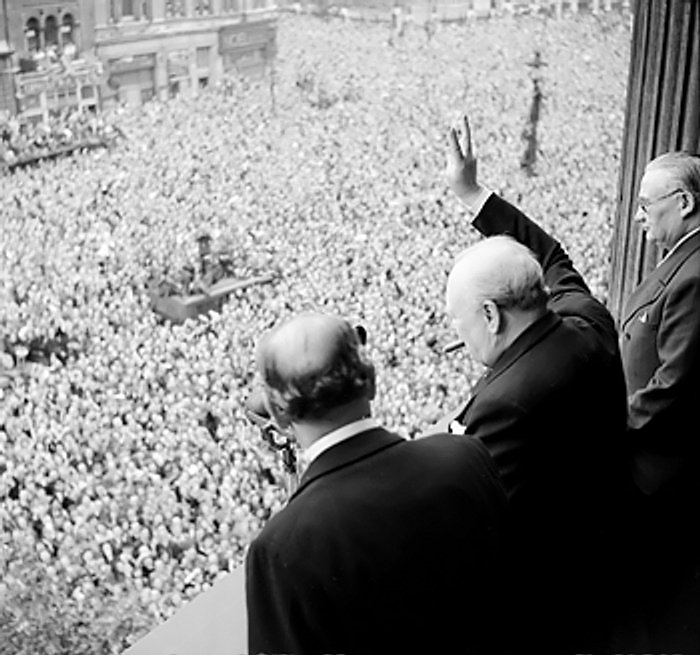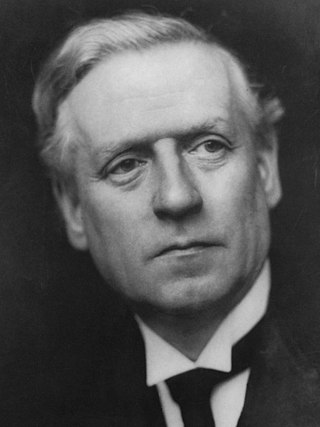10 Most Famous British Prime Ministers
Please note: There are many ways in which the most famous British prime ministers can be ranked. This ranking is based on the 2004 University of Leeds survey studying the success of 20th century prime ministers.
1. Sir Winston Churchill (1940 – 1945, 1951 – 1955)

Wikimedia Commons
Sir Winston Churchill can easily be considered Britain’s most famous prime minister. Not only that, but he could also be said to be one of the world’s most famous figures of the 20th century. The two time prime minister was a prominent member of the Conservative party, and is widely credited with leading Britain and the Allied powers to victory during the Second World War.
In Churchill’s youth he served in the First World War at the Western Front, surviving significant shelling attacks. Later, he was a key figure in the process of British rearmament as the threat from the Nazi party grew during the 1930s, and at the outbreak of war was appointed First Lord of the Admiralty once again. In 1940, following his election as British prime minister he formed a War Cabinet.
Despite achieving significant successes during the war, some of his more brutal decisions caused controversy at the time, and his strongly imperialist sentiments have come under increasing throughout over the decades. Nonetheless, it cannot be denied that he remains a significant political figure in British History.
2. Clement Attlee (1945 – 1951)
Clement Attlee was British prime minister between Sir Winston Churchill’s two terms after serving as Churchill’s Deputy Prime Minister during the Second World War.
Shortly following the end of the war, Attlee led the Labour Party to a landslide victory in the 1945 general election, the first such victory for Labour. During his time as prime minister, he oversaw significant social reforms in the country, including the nationalisation of public utilities and, most significantly, the founding of the National Health Service, or NHS. Today, the NHS endures as one of the world’s biggest employers and one of the most successful public health services in the world.
His tenure also saw significant post war changes within the then British Empire, including the partition of India and the independence of several territories.
The significant improvements to public services and care made by his government have led many academics to deem him Britain’s most successful modern prime minister.
3. David Lloyd George (1916 – 1922)

Wikimedia Commons
David Lloyd George was the prime minister who led Britain to the end of the First World War and into the 1920s. Following the fall of H. H. Asquith Lloyd George became prime minister, which caused a rift within his Liberal Party.
After developing a War Cabinet in 1916, he contributed to the unification of the Allies which eventually led to victory in 1918. The Imperial War Cabinet sanctioned the Flanders Offensive which led to the Battle of Passchendaele. Significant losses were experienced on both sides, however the loss to the German army was significant and crippling. The invention of the War Cabinet was considered one of Lloyd George’s most successful ideas. The cabinet oversaw vital wartime rationing and improved conscription rates among the general public.
The next few years saw him being involved in several scandals followed by economic depression and a rise in unemployment at the beginning of the 1920s. He eventually resigned in 1922.
4. Margaret Thatcher (1979 – 1990)
Margaret Thatcher achieved world fame upon her election in 1979 as Britain’s first female prime minister. Despite many controversial policies and events during her three terms, she is still viewed favourably by many with a legacy still evident today.
Margaret Thatcher’s controversial first term as prime minister initially saw the major privatisation of state owned companies, which caused a reduction in the power of trade unions and proved unpopular with many working people. However, Britain’s victory in the Falkland War and a recovering economy resulted in a landslide reelection in 1983. In 1984 she survived an assassination attempt by the IRA.
In subsequent years, her popularity waned due to her Euroscepticism and efforts against the National Union of Mineworkers during their strike action. In 1990 she resigned against opposition from politician Michael Heseltine. She was famously portrayed by Meryl Streep in the Oscar nominated 2011 film The Iron Lady.
5. Harold Macmillan (1957 – 1963)

Wikimedia Commons
Harold Macmillan was one of several British prime ministers to serve in the First World War in his youth. Macmillan miraculously survived severe wounds during the Battle of the Somme to eventually enter Parliament in 1924. He became prime minister following the resignation of Anthony Eden after the Suez Crisis. During his time as prime minister he promoted significant public investment and oversaw an affluent age of high growth and low unemployment.
Macmillan’s Conservative government was eventually toppled by a series of events, one of the most famous being the Profumo affair. This scandal of the Secretary of State For War John Profumo’s extramarital affair with young model Christine Keeler was recently immortalised in the BBC series The Trial Of Christine Keeler. The widely publicised affair led to a jail sentence for Keeler, Profumo’s resignation in disgrace and even the suicide of Keeler’s friend. It also fatally damaged the reputation of Macmillan’s government. He resigned under increasing pressure in October 1963, following a bout of ill health.
6. Tony Blair (1997 – 2007)
Tony Blair was British prime minister for ten years, as was elected during Labour’s largest landslide victory in history. He also won two subsequent elections. He oversaw a change in the Labour party named New Labour, which distanced it from previous heavy socialist policies. During his terms the party moved away from significant trade union influence and closer to the European Union.
In 1998 he introduced the National Minimum Wage act, and other significant improvements in equal rights in the country. At the beginning of the 21st century, he supported George W. Bush at the outset of the War in Afghanistan following the September 11 attacks, and the subsequent 2003 invasion of Iraq. This led to a decline in popularity with the British public, many of whom saw the invasion as excessive and unnecessary. His anti terror policies following the London bombings also came under scrutiny.
In 2007 Blair was succeeded by Chancellor Gordon Brown.
7. H. H. Asquith (1908 – 1916)

Wikimedia Commons
Liberal politician Herbert Henry Asquith was the last Liberal prime minister.
He led the reform agenda of the Liberal Party during his time as prime minister. This involved a reduction in the power of the House of Lords, but also difficulty in dealing with rule in Ireland at the time.
After taking Great Britain and the British Empire into the First World War in 1914, his weak leadership came under heavy scrutiny, especially his failure to address issues of conscription, finance and strategy. His government was also criticised for a lack of munitions and the failure of the Gallipoli Campaign. After forming a coalition government with other parties, his power waned further and he was forced to resign in 1916.
8. Stanley Baldwin (1923 – 1924, 1924 – 1929, 1935 – 1937)
Baldwin was a Conservative prime minister who oversaw an improvement in Conservative appeal during his terms. His government improved childcare, pensions and housing.
The abdication crisis within the British Monarchy also occurred during his third term. Baldwin joined others in their attempts to dissuade King Edward VIII from his taboo marriage to twice divorced American Wallis Simpson, but to no avail.
In recent decades however, his tenure has come under increasing criticism due to the high unemployment levels in the country during his terms. He has also faced vilification for the rise in power of Adolf Hitler under his watch, and also for attempting to appease Hitler, rather than challenge him, and for insufficient armament in the years leading up to World War Two. Despite this, he is still generally viewed as successful by academics.
9. Harold Wilson (1964 – 1970, 1974 – 1976)

Wikimedia Commons
Harold Wilson became leader of the Labour Party following the sudden death of previous leader Hugh Gaitskell. He won the subsequent leadership election and the 1964 general election. His first period as prime minister was an age of low unemployment and general prosperity, however Wilson then lost the 1970 general election to Edward Heath before returning to power in 1974.
He is mostly considered to have been a moderate socialist, and is credited with leading the country well during difficult times including the Vietnam War. He is portrayed by actor Jason Watkins in the popular Netflix series The Crown.
10. Lord Salisbury (1895 – 1902)
The last British prime minister of the 19th century, Lord Robert Salisbury was a three time British prime minister. In his youth, he defied his aristocratic father to marry a woman of lower social standing than him and his family.
A complicated and capricious personality, he was nonetheless effective in his policies and particularly in foreign affairs. He oversaw a significant investment in and expansion of the Royal Navy and an attempt to combat growing unrest in the countries of the Mediterranean.
He resigned in 1902 with honours following the death of his wife.
Planning a trip to Paris ? Get ready !
These are Amazon’s best-selling travel products that you may need for coming to Paris.
Bookstore
- The best travel book : Rick Steves – Paris 2023 – Learn more here
- Fodor’s Paris 2024 – Learn more here
Travel Gear
- Venture Pal Lightweight Backpack – Learn more here
- Samsonite Winfield 2 28″ Luggage – Learn more here
- Swig Savvy’s Stainless Steel Insulated Water Bottle – Learn more here
Check Amazon’s best-seller list for the most popular travel accessories. We sometimes read this list just to find out what new travel products people are buying.










